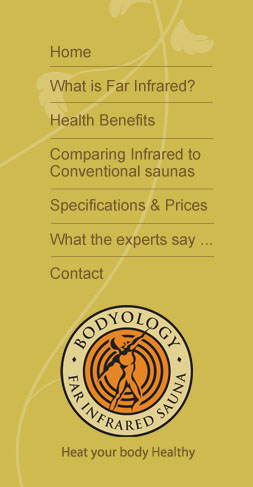

Traditional saunas work by producing very hot air; this effect is created by burning a contained substance with an electric stove element. The resulting steam produces an unusually hot atmosphere which, in turn, causes rapid perspiration on the part of bathers, and triggers what appears to be a ‘cleansing’ process.
However, we now know that – in this situation – the body releases salts rather than toxins. In traditional-style saunas only the body’s surface temperature is heated, and the sweat produced is merely a cooling reaction.
The critical advantage of Far Infrared Saunas is that they penetrate deeply and are consequently able to extract harmful metallic toxins.
From a comfort point of view, Far Infrared Saunas yield many benefits: they enable easier breathing, the air is dry and a sense of claustrophobia and nausea is largely avoided.
To find out more please refer to the handy Comparison Table alongside.
Far Infrared Saunas
|
Conventional &
Steam Saunas |
|
Wood Type |
Non-toxic hemlock |
Usually cedar, contains cedrene |
Heat Source |
Infrared ceramic emitters |
Electric stove element |
User Comfort |
Breathing, relatively easy |
Harder to breathe |
Temperature |
Ambient to 50 °C |
More than 70 °C |
Sweat analysis |
80% water, 20% toxins |
97% water, 3% toxins |
Elect. power |
1-2KW |
3-4KW |
Pre-heat time |
20 min |
45 - 90 min |
Fresh air circulation |
Yes |
None |
Energy cost at 1hr/day |
R22.00/month (incl. warming up) |
Between R150-R210plus/month |
Comfort level |
Dry radiant heat |
Claustrophobic/humid |
Controls |
Digital soft touch, internal & external controls |
Usually outdoor controls, uses water over coals to control internal temp., unpredictable |
Stereo music |
AM/FM CD player |
Disallowed |
Medical use |
Used by physicians |
No data |
Mold & mildew |
No |
Yes |
Maintenance |
Nominal |
Expensive |
Portability |
Transportable/movable |
Fixed |
Other features |
5yr warranty on heaters |